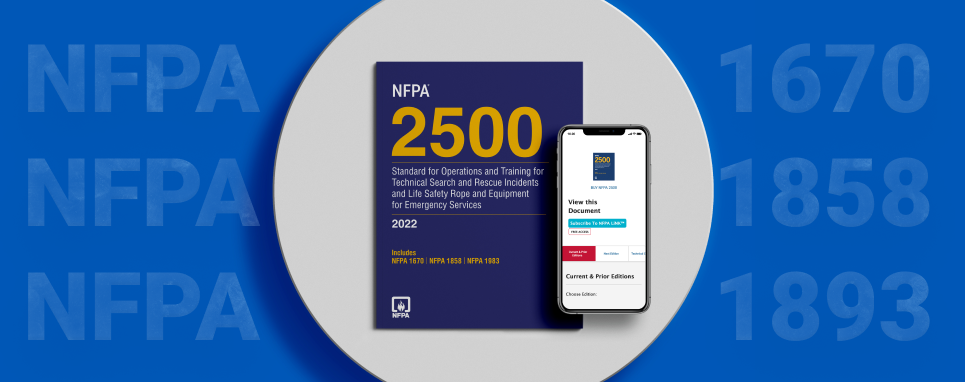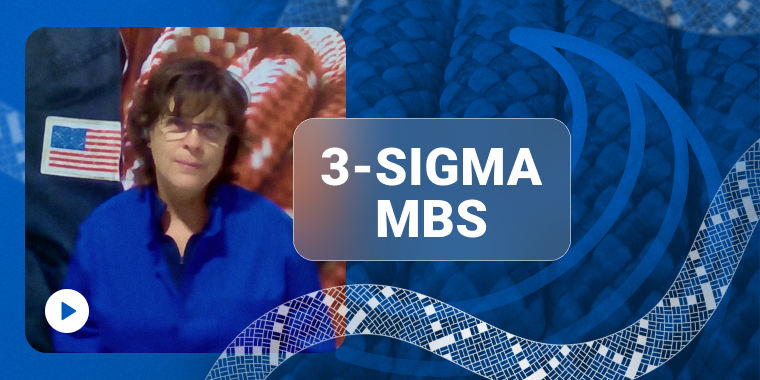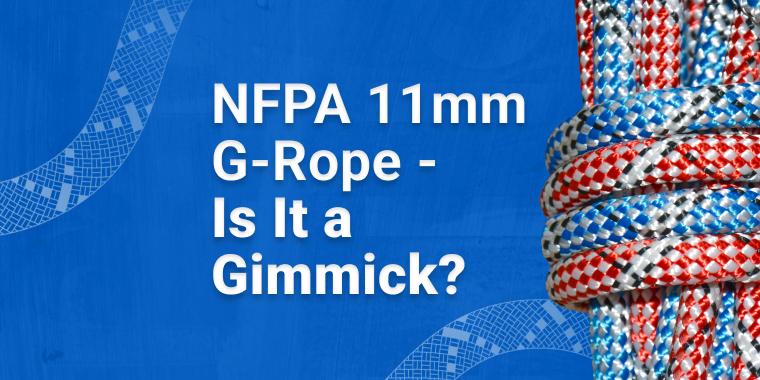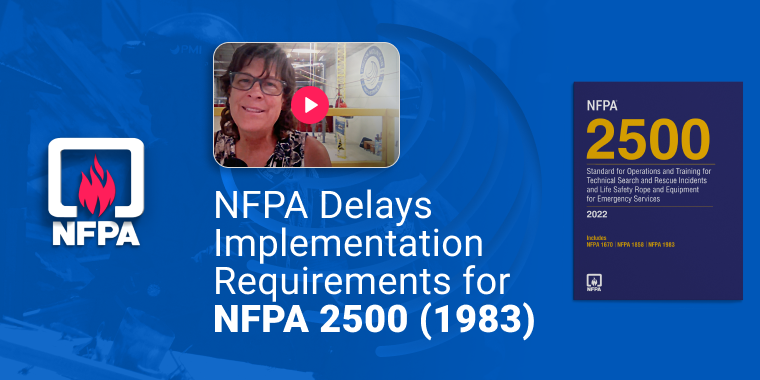Standards and Compliance
Rope Rescue Training and Equipment Standards Combined
If you are an Emergency Services Responder – especially if you are affiliated with the fire service – here’s a little something you might be interested in knowing about. Actually, it’s more than a “little” thing, its more like 237 pages worth of a big thing!
Up to now, if you were interested in an NFPA standard you might have purchased a standard that was somewhere around 40 pages long, and it would contain requirements, test methods, labeling, and other standards-speak.
Last year PMI shared a message to make you aware that NFPA was going through a process of consolidating related standards into volumes. Now, the volume pertaining to Operations and Training for Technical Search and Rescue Incidents and Life Safety Rope and Equipment for Emergency Services has just been released. It’s been given a new number, NFPA 2500.
You can get your very own copy by reaching out to the National Fire Protection association in Quincy Massachusetts – by phone, 800-344-3555 or order it online at catalog.nfpa.org.
This standard combines what used to be three separate documents… NFPA 1983 (which was equipment focused); NFPA 1858 (which provided selection use and care information) and NFPA 1670 (which outlines team competency for Technical Rescue.) This new consolidated standard, now known as NFPA 2500, actually contains the substance of all three of those documents.

NFPA 1006 – Professional Qualifications for Technical Rescuers – is still a separate document, but the 1006 and 1670 committees have worked VERY hard to try to harmonize the Professional Qualifications requirements with Organizational Training requirements.
In any case, if you’re a professional rescuer, the NFPA 2500 document is something you will want to become familiar with.
PMI is a manufacturer of life safety rope and equipment for professionals, and our CEO Loui McCurley has been personally involved with these NFPA standards since the early 1990’s. We consider it to be part of our mission to help make sure that industry professionals working rescue and work at height are familiar with the information, technical knowledge, and standards that could impact their work.
If you would like to review the NFPA 2500 standard on Operations and Training and Life Safety Rope and Equipment for Rescue, you can access it free of charge at NFPA.org. Just type NFPA 2500 in the Search box, and click on Free Access!
We’ve come a long way with these documents in the last thirty years, but most people will agree that standards just don’t change fast enough to keep up with our constantly evolving industry – so its likely that you might find some things in these new documents that you might not agree with.
If that’s the case – NFPA invites you to submit input through the online submission process at NFPA.ORG. These committees love having input and participation in this work, especially from folks like you who actually have to USE the standards in various ways!

One of the most confusing things about the new standard may be that instead of referring to the old standards numbers (1983, 1858 and 1670), as an industry we will now be referring to the new standard number, 2500.
This will probably have the greatest impact on equipment that you use, as you are probably accustomed to looking for markings that say NFPA 1983. In an effort to try to minimize confusion, NFPA has decided to include the old standard reference numbers along with the new ones on marked equipment – so, for example, where certified equipment previously might have been marked something like
NFPA 1983(2017) (G)
It will now look more like this
NFPA 2500 (1983) 2022 ED (T)
Depending on the item of equipment, there should be a G, T or E on the label to indicate whether it is intended for General Use, Technical Use or Escape.

In order to be compliant with the standard, equipment has to be third party tested by a qualified laboratory, like Underwriters Laboratories, or Intertek Laboratories. But these test labs couldn’t actually start testing to the standard until it was published – and, that just happened.
So, it’s still going to be awhile before you start seeing equipment with the NFPA 2500 label on it.
The next logical question then is, how soon do users have to start using equipment that meets the new edition? When must we stop using equipment just because it is marked to the old standard?
The simple answer is, we don’t.
There are no NFPA requirements, no law, that says you have to use equipment meeting the most current version of any standard. There are no requirements for when you have to start using equipment marked to the new standard.
There IS however a deadline for when we MANUFACTURERS have to stop SELLING equipment marked to the old standard. That deadline is 12 months from the effective date of the new standard.

In this case, even though the new standard wasn’t actually PRINTED until just a few weeks ago, the EFFECTIVE DATE was SEPTEMBER 2021. If that sounds confusing, it is because it is… the standard really did go into effect before it was printed.
In any case, what that means is that you will still be able to buy equipment that is marked to NFPA 1983-2017 Edition until SEPTEMBER 2022.
The GOOD NEWS here is that there weren’t a whole lot of significant technical changes to the standard, so most all the equipment that was properly certified to the 2017 standard will still also meet the 2022 standard.

There was a whole big team of folks who worked on these standards, and they ALL deserve a big shout-out… but most notably we would like to acknowledge the incredible efforts of Jeremy Metz from West Metro Fire Department, who is chairman of the Technical Committee on Special Operations Protective Clothing and Equipment and amazing Committee Secretary, Karen Lehtonen from Lion Group. We’d also like to recognize Ben Waller, Tennessee Association of Rescue Squads, who is chairman of the NFPA 1670 Technical Committee on Technical Search and Rescue.
These three provided extraordinary leadership and facilitated amazing collaboration through the entire process – which wasn’t easy!
Although we didn’t create it, PMI is – as always – going to do our level best to walk with you, support you, and assist you in navigating this change with as little impact as possible on your organization.
We’d love to hear your comments and questions here, and will try to answer any specific questions you might have along the way.




Andrea de Vries
Thanks for this great review, Loui, and for your continued contributions to the industry.